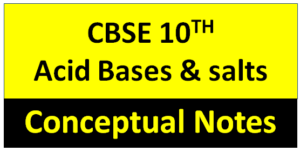
Human Eye
- It is an Organ in our body which allow us to see
- it’s diameter is approx 2.4 Centimetres
Human Eye Parts
Cornea
- It is an Outer most Transparent part of the eye , that covers and Protect eye and allow light to Enter in the Eye
Iris
- It is a dark muscular Tissue behind Cornea that controls the size of pupil
Pupil
- It is a small opening in the Iris that controls the amount of light to enter in the eye
- it is also called as ” Window of the Eye “
- Types Dilated Pupil and Constricted Pupil
Crystalline Lines
- It is also called as ” Eye lens ” which is Present behind the Iris & Pupil
- It’s a convex lens composed of fibrous jelly like Material
- It provides Real & Inverted Image on Retina
Retina
- It Presents at the backside of the Eye
- Real and Inverted Image from on it
- Its a Membrane that contain many light sensitive cells on back of an eye
- Image formed on Retina generates electrical signals
Optic Nerve
- These Nerves transfer Electrical signals to the brain
- Our brain processes these signals and converts inverted to erect Image
Vitreous Humour
- It is the biggest part in the human eye
- It is a Clear and colourless fluid like water
- It provides nutrients to our eye
- It also Keeps our eye in shape
Accommodation of Eye
- It is a process in which the Ciliary Muscles changes the focal length of our eye
- it is being done in order to get a clear image on the Retina
Ciliary Muscles
- it changes the shape of eye lens whenever our eye focus on nearby or far distant object
- Accommodation is an ability of our Eye to see Nearby or far away objects clearly
Image formation- For Far objects
- Ciliary Muscles get relax
- Eye lens become thin
- Hence focal length increases
- This allow us to see far objects clearly
Image formation -For Near Objects
- Ciliary Muscles contracts
- Eye lens become thick
- Hence focal length decreases
- This allow us to see Near objects Clearly
Range of Human Vision
Near point -The Near point of a human eye is 25 cm.
Far Point -The Far point of a Human eye is infinity .
Defects of Vision & their correction
3 Eye defects
- Myopia
- HyperMetropia
- Presbyopia
Myopia
- This is also known as Near nearsightedness
- in this a person is able to see near object clearly but unable to see far objects clearly
- in a myopic eye, image is being from in front of the Retina
Reason of Myopia
- Decreases in Eye lens focal length
- Elongation of the Eye ball
Correction of Myopia
- Concave lens is used to correct it
HyperMetropia
- This is also known as far Sightedness
- In this a person is able to see far objects clearly but unable to see Near objects clearly
- In a HyperMetropia eye , Image is from behind the Retina
Reasons of HyperMetropia
- Focal length of Eye lens increases
- Shortening of the Eye ball
Correction of HyperMetropia
- Convex lens is used to correct it
Presbyopia
- This is also known as Old age -HyperMetropia
- This defect is mostly seen in Old age individuals
- Generally Eye Accommodation Power decreases with limit or age
- It causes difficulty in seeing both Near & far distance Objects Clearly
Reasons of Presbyopia
- weakening of Ciliary muscles
- Decreasing flexibility of Eye lens
Correction of Presbyopia
- Concave and convex lens both are used for Its correction
Cataract
- It is also an Eye defect
- In this defect the crystalline lens becomes foggy in some old age persons
Reasons of Cataract
- Due to build up of Protein on Eye lens
Correction of Cataract
- Cataract can be Cure by a surgery
Prism
- It is a Pyramidal piece of glass or other Transparent material with 2 triangular bases and 3 lateral surfaces
Angle of Prism
- It is the angle between the lateral surface of the prism
Angle of Deviation
- It is the angle between the incident and the emergent ray
Dispersion
- when the light passes through a glass prism then while light splits into the 7 colours and this phenomenon is called Dispersion
Total Internal Reflection
we have studies in the chapter Light Reflection and Refraction
- The phenomenon of change in path of light rays as it passes from one medium to another medium Rare→Denser→bends towards normal
- when a light enters Denser medium to rare medium and angle of incidence below critical angle then the light reflects to in a denser medium.
Critical Angle
- it is the angle from which light can travel from denser to rare medium if the ∠i is greater
Rainbow Formation
- Rainbow is a Natural spectrum which is from in the sky after rainfall.
- Rainfall is observe in opposite direction of the sun .
- when rainbow form, 3 Phenomenon occurs
- Refraction
- Dispersion
- Total Internal reflection
Atmospheric Refraction
we have studied about Refraction of light that the phenomenon of change in path of light rays as it passes from one medium to another medium
Atmosphere
- It is composed of layers of gases which surrounds the Planet
- Atmosphere made up of Gases, Water droplets , Dust Particles
- Refraction happens because of the variations in refractive indices of the mediums
- in our atmosphere Hot & Cold gases present
- Refraction indices of Hot gases are less in comparison of cold gasses
- two phenomenon can be observe due to this twinkling of stars , Advance sunrise & delayed sunsets
Twinkling of stars
- stars didn’t twinkle actually they just appear to be twinkle to us
- when stars light enters earth’s atmosphere refraction of light takes place
- The Intensity of light vary due to atmospheric refraction which causes twinkling of stars to our eyes
why not planets twinkle ?
- planets are present at nearby distance and also appear bigger in size as compare to the far distant stars.
Advance Sunrise & delayed Sunset
- This phenomenon occurs due to atmospheric refraction
- when light enters earth’s atmosphere it bends due to refraction
Scattering of light
- when light passes through Earth’s atmosphere it gets scattered due to the small/large particles present there
- Scattering of light depends upon the size of particles
- Small/fine particles scatters blue colour the most
- Because blue colour has the shortest wavelength
- Medium sized particle scatters Red colour the most, as red has the longest wavelength .
- Large size particles scatters all colour’s light that’s why light appears in white colour
Tyndall effect
- In Our atmosphere there is presence of dust particles tiny water droplets smoke particles
- light reaches us after passing through these particles
- Lights path become visible after passing through this colloidal solution
- This Phenomenon is known as Tyndall effect .
Why does sky appears blue
- Small particles scatters blue colour the most as it has smaller wavelength
Why Sun appears red at the time of sunrise & sunset
- At the time of sunrise & sunset the sun is near the horizon therefore sunlight travel more in earth’s atmosphere due to this blue light scatters by fine particles but light of longer wavelength (red) reaches to our eyes .






